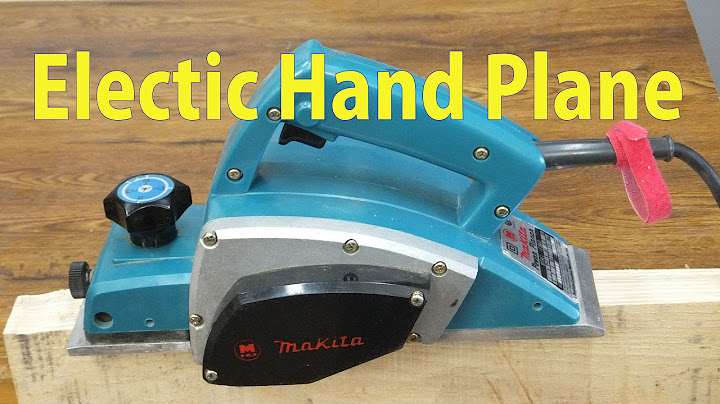Your cart is currently empty!

Electric Wood Planer

An electric wood planer is a power tool that helps you make smooth, flat surfaces. It’s easy to learn how to use and can save you time in the long run by speeding up your projects.
An electric planer is powered by a motor and uses hard metal reversible blades to cut through the wood. It also requires a good depth scale and a set of gauges and stops to control how much material is removed.
Power
Electric wood planers shave and shape wood like a hand plane, a belt sander and a jointer all rolled into one. These powerful power tools are invaluable when you need to trim stock, rip or taper, make stubborn doors close and more.
When selecting an electric wood planer, there are several key considerations that you should take into account to ensure a smooth and effective operation. These include the operating speed, depth of cut and safety features.
The electric planer should be able to rotate the cutting head at a high speed of about 15,000-20,000 RPM, depending on the model chosen. This is because higher rotational speeds produce more refined cuts than slower spinning machines.
Safety
When using an electric planer, it is important to take the proper safety measures to protect yourself from injury. This includes not allowing anyone to come in contact with the cutting blade, especially hair and clothing.
It also means that your work area needs to be kept clean and free of dust, dirt or debris. This will help keep you safe while working with your planer and ensure that it lasts as long as possible.
ELECTRIC PLANER POWER: Benchtop and heavy-duty models are typically rated in amps (A) while cordless battery-powered models have Ampere-hour (Ah) ratings that tell you how much juice they can hold between charges.
SPEED: The speed of the cutterhead is another metric that is important when buying an electric planer. Higher RPM speeds provide a faster and smoother finish.
BLADES: Basic electric planers can use one blade, while those geared for carpenters and woodworkers will typically have two or more. These are made of either High-Speed Steel or Tungsten Carbide.
Controls
A power planer shaves and shapes wood like a hand plane, a belt sander and a jointer all rolled into one. This versatile tool can be used for leveling joists, making stubborn doors close properly and for DIY projects in your workshop.
Adjusting the depth of cut is simple and intuitive on most electric planers. Most simply click a large twist knob, while others feature detents with markings in fractions of an inch or metric units.
How much stock you remove per cut depends on a variety of factors: how hard the material is, the width and depth of the cut, and how thick the workpiece is. As with a jointer, you need to be careful not to remove too much stock at once, as this may cause cracks in the wood.
Chip direction is also a key factor. Some planers shoot chips in one direction only, while other models allow you to eject chips from either side of the machine. This flexibility is especially useful if you need to connect the planer to a shop vacuum for dust collection.
Maintenance
An electric wood planer, just like any other tool, needs routine maintenance in order to perform optimally. It is not a hard or time-consuming task to carry out, and most of these tasks can be done at your own shop without the need for professional repair work.
All tools have various parts that reduce their efficiency due to aging or friction, and this can be avoided through proper maintenance. In this regard, storage procedures and appropriate use of the wood planner are crucial to ensure that the tool functions efficiently.
Besides, it is important to maintain the electrical system and the cables of the machine. This will avoid consuming excessive energy in overcoming the force of friction.
It is also important to check the blades and ensure that they are reversible. Unbalanced blades can cause vibration and poor planing action. Keeping a spare set on hand is recommended.
by
Tags: